The Films of
Sergio Leone
The Films of
Sergio Leone
Robert C. Cumbow

SCARECROW PRESS, INC.
Published in the United States of America
by Scarecrow Press, Inc.
A wholly owned subsidiary of
The Rowman & Littlefield Publishing Group, Inc.
4501 Forbes Boulevard, Suite 200, Lanham, Maryland 20706
www.scarecrowpress.com
Estover Road
Plymouth PL6 7PY
United Kingdom
Copyright 2008 by Robert C. Cumbow
Revised from Sergio Leones West, an unpublished manuscript 1982
Robert C. Cumbow, and Once Upon a Time: The Films of Sergio Leone, published 1987 by Scarecrow Press (ISBN 0-8108-1947-3)
1985 by Robert C. Cumbow
Photos from the collection of Robert C. Cumbow
All rights reserved. No part of this publication may be reproduced, stored in a retrieval system, or transmitted in any form or by any means, electronic, mechanical, photocopying, recording, or otherwise, without the prior permission of the publisher.
British Library Cataloguing in Publication Information Available
Library of Congress Cataloging-in-Publication Data
Cumbow, Robert C., 1946
The films of Sergio Leone / Robert C. Cumbow.
p. cm.
Filmography: p.
Discography: p.
Includes bibliographical references and index.
ISBN-13: 978-0-8108-6041-4 (pbk. : alk. paper)
ISBN-10: 0-8108-6041-4 (pbk. : alk. paper)
1. Leone, Sergio, 19291989Criticism and interpretation. I. Title.
PN1998.3.L463C86 2008
791.43'75092dc22
2007030467
 The paper used in this publication meets the minimum requirements of American National Standard for Information SciencesPermanence of Paper for Printed Library Materials, ANSI/NISO Z39.48-1992.
The paper used in this publication meets the minimum requirements of American National Standard for Information SciencesPermanence of Paper for Printed Library Materials, ANSI/NISO Z39.48-1992.
Manufactured in the United States of America.
Contents
A Sergio Leone Film
From Sandals to Six-Shooters |
Me Right in the Middle
A Fistful of Dollars |
I Can See That It Means a Lot to You
For a Few Dollars More |
Two Kinds of People in the World
The Good, the Bad and the Ugly |
A Nice, Quiet Country Life
Once Upon a Time in the West |
All I Want Is the Money
Duck, You Sucker! |
There Was Never Any Good Old Days
My Name Is Nobody |
Go Look at Yourself
Once Upon a Time in America |
They Earned It
The Crew |
I Have to Know Who You Are
The Faces |
A Man Who Knows What He Wants
The Moral Geometry of Sergio Leone |
ShootDont Talk!
Themes and Images |
He Not Only PlaysHe Can Shoot, Too
Morricone Encomium |
You Know Musicand You Can Count
Bob Robertson and Joe Green |
Theres a Hole in the Roof
Sergio LeoneCatholic Filmmaker |
Acknowledgments
So many people have, over the years, made a difference to my experience and vision of the films of Sergio Leone that it is impossible to thank them all properly, and daunting even to try to list them all. But I must make the effort. They earned it.
The story starts one day in 1978, when, after watching The Good, the Bad and the Ugly for the umpteenth time, at The Cinema in Olympia, Washington, I remarked to proprietor Nancy Duncan that someone ought to write a book on Sergio Leone. Why dont you? she replied.
A couple of articles constituted dry runs at the subject. Then, in the early 80s, I took a shot at a book, to be called Sergio Leones West. The plan had to change when Leone began work on his longtime dream project, Once Upon a Time in America. So I revised an already completed manuscript, and in 1987 Once Upon a Time: The Films of Sergio Leone saw the light of day as the first full-length book on Leones work. There had been articles here and there, one monograph in French and one in Italian, and chapter-length discussions in Christopher Fraylings Spaghetti Westerns and Laurence Staig and Tony Williamss Italian Western: The Opera of Violence. But mine was the first effort at a book-length consideration of Leones films, what makes them work, and what makes them fascinate us.
It was not without its warts. That first edition was written at a time when information on Leone, his work, and Italian Westerns in general was in short supply and unreliable. Even prints of the films contained misspelled names, characters assigned to the wrong actors, insufficient credit crawls or none at all. For names of characters and lines of dialogue, one had to rely on what one heardor thought one heardon an often badly dubbed soundtrack, and scribbled down, barely legibly, in a dark movie house.
As Sergio Leone went from a stylistic oddity of film history, appreciated by a fistful of followers, to a household word and an acclaimed influential cinematic original, I became increasingly painfully aware ofand embarrassed bythe errors and inadequacies of the 1987 edition. But nearly two decades would pass before I got the opportunity to revise the book. During that interim, as the age of the Internet brought fans together and made information more readily available, detailed information on the films and the talent behind them became abundant, and I am pleased and honored at last to present this revised, enhanced, and corrected editionThe Films of Sergio Leone.
I repeat here the names of those I thanked in 1987 for their help in making this book happen in the first place: Nancy Duncan, R. C. Dale, Anna White, Bill McCallum, Stephanie Ogle, Douglas Holm, Ernest Callenbach, Stuart Kaminsky, Leonard Maltin, Danny Peary, Richard T. Jameson, Kathleen Murphy, and Steven Bussall of whom provided help, encouragement, and inspiration. I also acknowledged the generous assistance in locating photographs provided by Mary Corliss, Museum of Modern Art Film Stills Archive; Val Almendarez, Academy of Motion Picture Arts and Sciences National Film Information Service; Bruce York, Memory Shop West; Forrest Greene, Larry Edmunds Bookshop; Jerry Ohlingers Movie Materials Store; Jeff Hauser of SRO and Ad Agency West; John Teegarden of Seven Gables Theatres; Gary Tucker of Seattle International Film Festival and the world-famous Egyptian Theatre; Jim Emerson; Kathie Arnold; and John Hartl of the Seattle Times. Almost none of them still work for those organizations, and some of the organizations dont even exist anymore.
In addition, I renew my thanks to the University of California Press for permission to quote from Donald Richies Films of Akira Kurosawa; Routledge & Kegan Paul for permission to cite Christopher Fraylings Spaghetti Westerns; Alfred A. Knopf for the passages from Bruno Bettelheims The Uses of Enchantment; Farrar, Straus & Giroux, Inc. for the citation from William Goldings essay Custodians of the Real, anthologized in A Moving Target; and Variety for permission to reprint in full two items from the 1975 volume.
And today, in 2007, I have a whole new generation of friends and supporters to thankmany of whom I would never have met had it not been for the first edition of this book. Those cherished companions, whose help, encouragement, advice, and just good conversation have enhanced my life and my writing, include Tony Williams, Cenk Kiral, Dominique Guigneau, Austin Vince, Jean-Jacques Malo, Tom Betts, Tom Weisser, Simon Rogers, Bill Boehlke, Don Trunick, David Chapman, Christopher Butler, Sally Craley, Albert Sbragia, Iole Alessandrini, Mark Rahner, Robert Horton, Jeff Shannon, Tom Keogh, Bruce Reid, Clarke Fletcher, Kathy Fennessy, E. Steven Fried, Keith Simanton, Matthew Rovner, Ann Hockens, David Lowery, Peet Gelderblom and James Moran of 24 Lies a Second, Col at MovieGrooves.com, the late Peter Tevis and his wife Noi, John Bender, Sean Axmaker, and others I may soon be ashamed to have forgotten. I am especially indebted to Stephen Ryan and Sally Craley of Scarecrow Press for getting the project jump-started, and to Sandy Jenne for making it so much easier.
Next page
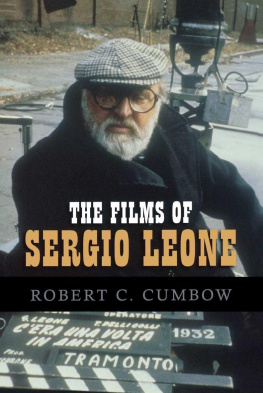

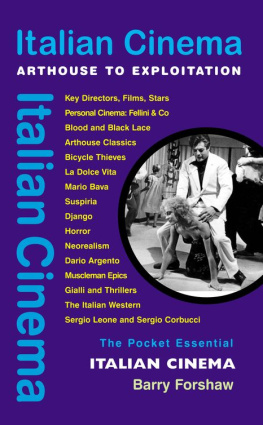


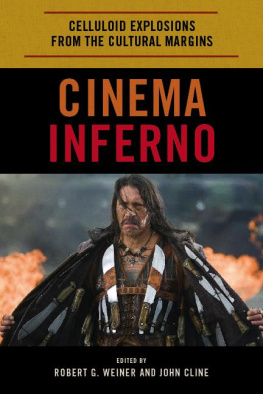
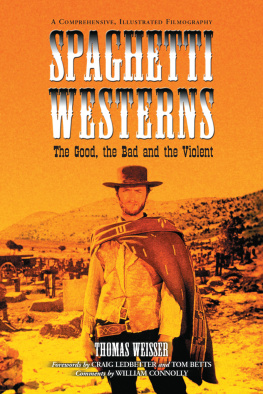
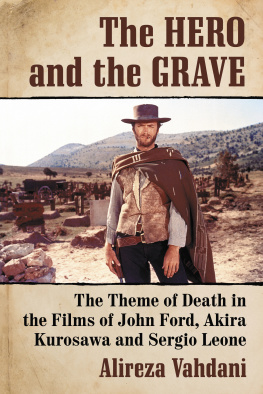
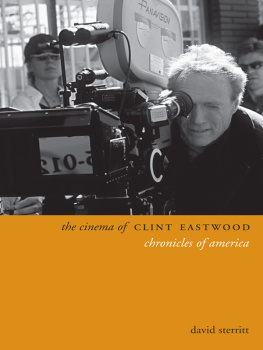


 The paper used in this publication meets the minimum requirements of American National Standard for Information SciencesPermanence of Paper for Printed Library Materials, ANSI/NISO Z39.48-1992.
The paper used in this publication meets the minimum requirements of American National Standard for Information SciencesPermanence of Paper for Printed Library Materials, ANSI/NISO Z39.48-1992.